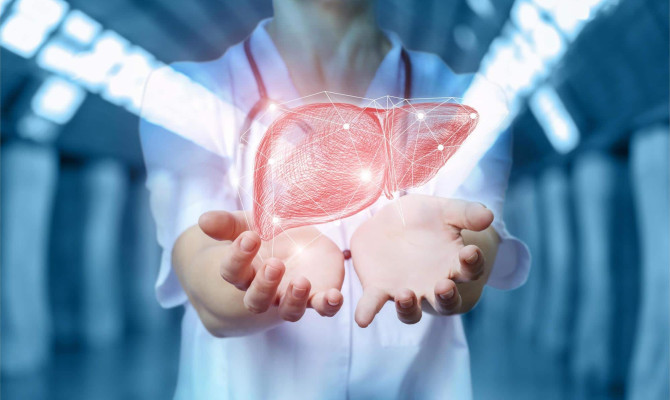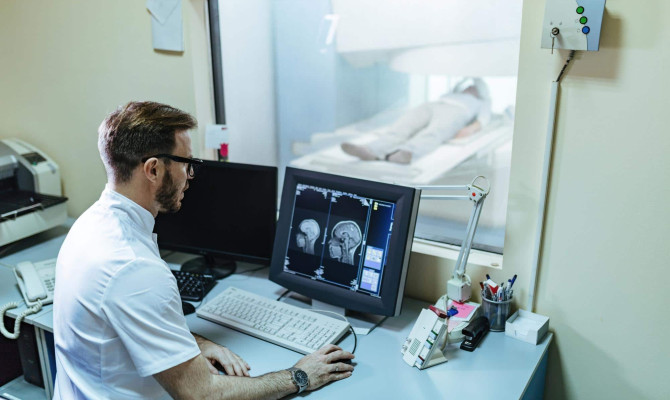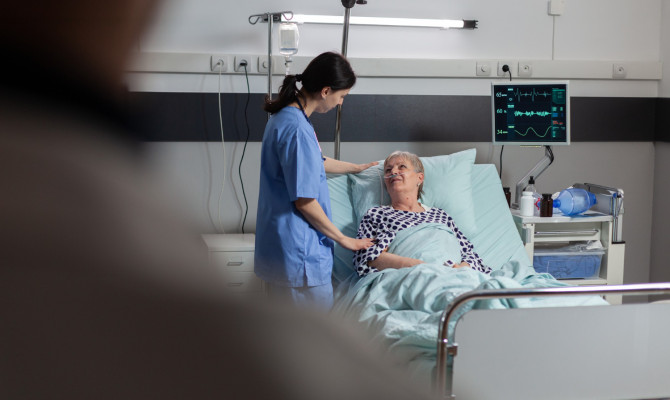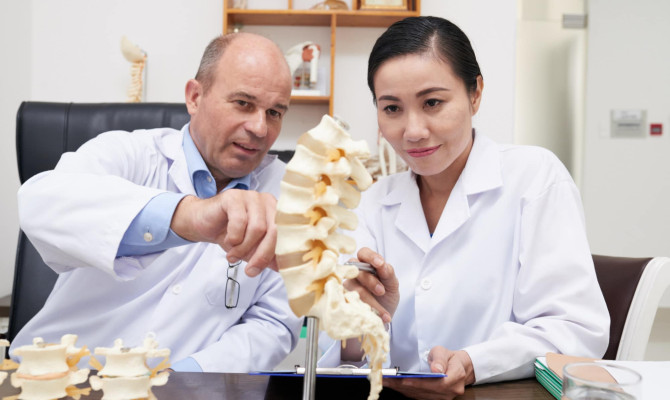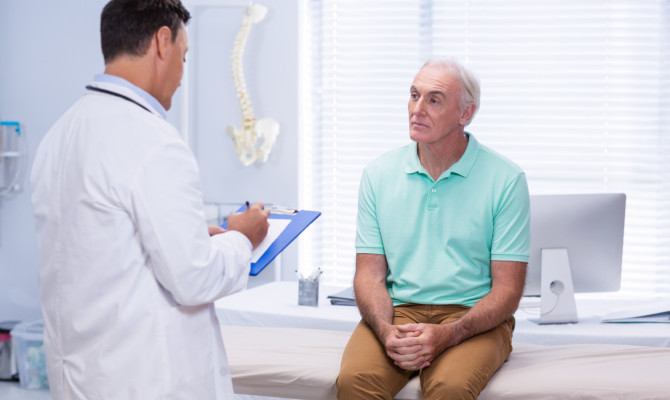Hernia After C-Section: Symptoms, Causes & Treatment

- Hernia
- 19 Oct 2023
Introduction
Hernia After C-Section
Childbirth by cesarean section, commonly called C-section, is a medical procedure that has become increasingly prevalent in recent years. C-sections are often performed for various medical reasons; like any surgical procedure, there are associated risks and complications. One such complication that can occur after a C-section is a hernia.

A hernia is a medical disorder in which an organ or tissue protrudes through a weakness or opening in the muscle or connective tissue surrounding it. In C-sections, hernias that develop afterward are hernias or incisional hernias after the C-section. We will explore how it can occur, the risk factors, common symptoms to watch for, diagnosis, available treatment options, and post-operative care.
The Connection
The Connection between C-Section & Hernia
This lies in the surgical process and the changes it introduced to the abdominal wall. Here is an explanation of this connection:
The incision in the abdominal wall
- To deliver the baby, a surgical incision is made into the uterus and abdominal wall during a C-section.
- This disrupts the normal integrity of the abdominal muscles and connective tissue.
Weakened abdominal wall
- The incision site, while carefully sutured and closed after the procedure, may still result in weakened or compromised abdominal muscles and fascia (the connective tissue that surrounds muscles).
- This weakening can create vulnerabilities in the abdominal wall.
Pressure and strain
- After a C-section, the abdominal muscles experience increased pressure and strain, especially during activities requiring core strength, such as lifting, bending, or coughing.
Risk of herniation
- Combining weakened abdominal structures and increased intra-abdominal pressure can create favorable conditions for Hernia.
- They can occur when internal organs or tissue protrude through these areas in the abdominal wall.
Location of incisional Hernia
- They typically occur near or at the site of the C-section incision.
- They can manifest as bulges or lumps under the skin and may cause pain or discomfort. 4 The Connection | Researched based study from ScienceDirect
Symptoms
Symptoms of Hernia after C-Section
- Pain and discomfort
- Swelling or bulge
- Tenderness
- Changes in appearance
- Nausea and vomiting
- Discomfort during activities
- Changes in size or shape
Following a C section, the following typical signs of a hernia may appear:
Pain and discomfort
- You may experience pain or discomfort near the C-section scar or in the abdominal area.
- From mild to severe, this pain might come on suddenly or gradually.
Swelling
- A noticeable bulge or lump may develop at or near the C-section incision.
- When you strain or stand up straight, as well as when you lie down, this bulge may become more noticeable.
Tenderness
- The area around it may become tender or sensitive to touch. You might feel discomfort when you press on or around the bulge.
Changes in appearance
- The appearance of the scar may change. It may look distorted or irregular due to the protrusion of tissue through the weekend wall.
Gastrointestinal symptoms
- It can sometimes lead to gastrointestinal symptoms such as nausea, vomiting, or changes in bowel habits.
- These may become more common if the tissue becomes trapped or incarcerated.
Discomfort during activities
- Activities that pressure the abdominal area, such as lifting heavy objects or coughing, may lessen the discomfort or cause pain at the site.
Changes in size or shape
- The size and shape of the bulge may change over time, becoming more noticeable or increasing as the Hernia progresses. 1 Symptoms | Researched based study from National Institutes of Health , 2 Symptoms | Researched based study from National Institutes of Health
How severe is Hernia after a C-section?
- The severity can change according on the type of hernia, its size, location, symptoms, and if it has become imprisoned or strangulated, among other considerations.
Causes
What Causes Hernia after C-Section?
Surgical technique
- The surgical technique used during the C-section can influence the risk of a hernia.
- Strategies that involve a larger incision or multiple incisions may increase the risk.
Obesity
- This places additional strain on the abdominal muscles and connective tissue.
- These structures can become weakened and more prone to herniation as a result of excessive body weight.
Age
- Advanced age, particularly for women over 35, may be associated with a higher risk.
Multiple pregnancies
- Women who have had multiple pregnancies, especially if they have undergone various C-sections, may have an increased risk of hernia development due to repeated stress on the abdominal wall.
Infection or complications
- Postoperative complications such as infections or poor wound healing can increase the risk.
Chronic coughing or straining
- Chronic coughing or straining can cause the abdominal muscles to experience repetitive stress, which can lead to the development of hernias.
- These conditions include smoking, chronic obstructive pulmonary disease (COPD), and constipation.
Genetic predisposition
- Some persons may be genetically predisposed to developing hernias, making them more likely to do so following surgery.
Pregnancy-related factors
- Larger babies, multiple pregnancies, or a history of high-risk pregnancy can increase the risk.
Strenuous activities
- Engaging in heavy lifting or strainers physical activity soon after a C-section before the abdominal muscles have had sufficient time to heal can increase the risk.
Lifestyle factors
- Smoking and inadequate nutrition can hinder the healing of tissues and may promote the development of hernias. 3 Causes | Researched based study from ScienceDirect,4 Causes | Researched based study from ScienceDirect, 2 Causes | Researched based study from National Institutes of Health
Diagnosis
Hernia After C-Section: Diagnosis
Clinical examination
- The doctor will often conduct a physical examination. They will enquire about your health background and symptoms.
Visual inspection
- During the examination, the healthcare provider with a visually impaired area pays close attention to the C-section scar site.
- They can ask you to cough or stretch, which occasionally makes the hernia more noticeable.
Palpation
- The provider will gently press on and around the area of concern.
- They will assess for tenderness and feel for any bulging or irregularities in the abdominal wall.
Imaging studies
- It is occasionally necessary to order imaging studies to verify the diagnosis and assess the size and placement. Typical imaging techniques include:
Ultrasound
- This examination produces images of the abdomen using sound waves.
CT scan (computed tomography)
- An abdominal region’s detailed cross-sectional images from a CT scan can be used to evaluate the area and any prospective consequences.
MRI (Magnetic resonance imaging)
- In some circumstances, MRI scans are useful because they can provide extra details about the hernia and the tissues around it.
Differential diagnosis
- Consider other conditions that can cause symptoms similar to those of a hernia, such as muscle strains or other abdominal wall issues.
- The goal of the diagnostic process is to eliminate these potential diagnoses. 5 Diagnosis| Researched based study from National Institutes of Health
Treatment
Hernia after C-Section Treatment
Observation and lifestyle changes during treatment
- Small, asymptomatic hernias might not need surgery right away. Your healthcare provider may recommend monitoring the Hernia while making lifestyle changes to reduce the risk of its worsening.
- Maintaining a healthy weight, avoiding strenuous exercise, and treating diseases like chronic cough or constipation are examples of this.
Belt or support for hernia
- Sometimes supporting the abdominal wall and easing discomfort can be accomplished by wearing a hernia belt or truss.
- Usually, those who are not surgical candidates or those who are awaiting surgery are advised to do this.
Surgical repair (herniorrhaphy or hernioplasty)
- It is the most common definitive treatment for Hernia after a C-section.
- Depending on the size, location, and the surgeon’s preference, the repair can be done through open or minimally invasive laparoscopic surgery.
- The surgeon will reposition the projecting tissues and strengthen the weak abdominal wall using sutures, mesh, or other materials during the treatment.
- Laparoscopic surgery involves smaller incisions and may offer quicker recovery times and less scarring than open surgery.
Emergency surgery (for incarcerated Hernia)
- If the hernia becomes strangulated (the blood supply to the herniated tissue is impaired) or imprisoned (the trapped tissue cannot be pushed back into the abdomen), immediate surgery is required.
- This is a serious problem that needs to be treated by a doctor right now. 5 Treatment| Researched based study from National Institutes of Health
Recovery
Hernia After C-Section: Recovery & Postoperative Care
Hospital stay and discharge
- The majority of hernia repair procedures are outpatient, so you can anticipate leaving the hospital the same day as the surgery or the day after.
- Sometimes, especially if you have other medical issues or difficulties, you might need to spend the night in the hospital.
Treatment of pain
- After surgery, you’ll probably feel some pain and discomfort. To address this, your healthcare practitioner will prescribe painkillers.
- Take pain medications as prescribed and follow any recommendations for over-the-counter pain relief.
Activity restrictions
- Avoid strainer activities and heavy lifting sizes that engage the abdominal muscles for the recommended period specified by your surgeon. Typically, this may be for a few weeks.
- Gradually resume light activities and increase your activity level as advised.
Diet and hydration
- Follow your surgeon’s recommendations, including a soft diet or nutritional restrictions immediately after surgery.
- Drink plenty of fluids, but avoid carbonated beverages that cause gas and discomfort.
Bowel movements
- Anesthesia and painkillers used during surgery might cause constipation. Your surgeon may recommend tools, softeners, or tips to help prevent it.
- Reintroduce high-fiber foods into your diet gradually to encourage normal bowel motions.
Incision care
- Keep an eye out for infections at the incision site, such as redness, swelling, heightened discomfort, or discharge.
- Keep the incision site protected from excessive moisture and avoid exposure to direct sunlight unless fully healed.
Driving and returning to work
- Please consult with your surgeon about when it is safe to resume driving and return to work.
- This may depend on your work type and the specific surgical procedure.
Physical activity and exercise
- Gradually introduce physical activity and exercise following your surgeon’s guidance.
C-section after hernia mesh repair
- If your hernia repair involved the use of surgical mesh, your surgeon will provide specific care instructions to it, including any limitations of precautions. 5 Recovery| Researched based study from National Institutes of Health
Any feedback on this article?
 This Articles content was accurate
This Articles content was accurate Very Informative Article
Very Informative Article I have a question or a comment
I have a question or a comment
 This article contains inaccurate content
This article contains inaccurate content This article was not helpful
This article was not helpful I have a question or a comment
I have a question or a comment
We appreciate your helpful feedback!
Checkout our social pages
References
-
National Institutes of Health
Symptoms
-
National Institutes of Health
Symptoms | Causes
-
ScienceDirect
Causes
-
ScienceDirect
The Connection | Causes
-
National Institutes of Health
Diagnosis | Treatment | Recovery













